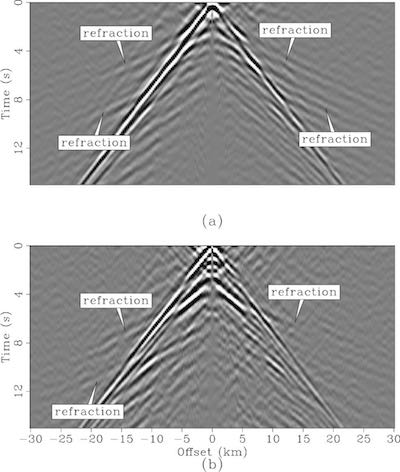
Whether due to naturally occurring or human-generated vibrations, the ground is never truly at rest. Though individual recordings of these vibrations appear to be noisy, there are actually spatially coherent seismic signals hidden in them. By having two receivers record this ambient seismic noise continuously and simultaneously, it is possible to extract these hidden signals with a method called passive seismic interferometry, which effectively transforms one of the receivers into a seismic source. Thus, when performed on an array of receivers, passive seismic interferometry can produce an entire virtual seismic survey at a fraction of the cost of a traditional seismic survey with active sources. These virtual responses between receivers can then be used to image the subsurface. A number of studies have successfully implemented passive seismic interferometry. However, the vast majority of them focus on extracting low-frequency microseism surface waves, which are generated by the interaction of ocean waves and the subsequent pressure variations along the sea-bottom. Though the resulting high-resolution subsurface velocity maps from these studies are impressive, they do not demonstrate the full potential of passive seismic interferometry. Hence, the goal of this thesis is to demonstrate the ability of passive seismic interferometry to extract more than just microseism surface waves. To do so, I apply the technique to three industry-scale seismic arrays located in three different environments. I first focus on urban ambient seismic noise recorded by a dense seismic array in Long Beach, California. In this environment, passive seismic interferometry using continuous recordings between 3 4 Hz extracts Rayleigh waves originating from these local roads. After tailoring my Rayleigh-wave traveltime selection criteria to account for the presence of noise sources within the array, I invert the traveltimes to produce near-surface group velocity maps that reveal structures that coincide well with those in geologic maps, including the Newport-Inglewood fault. I then switch to a shallow-water ocean-bottom node array in the North Sea to show that passive seismic interferometry can extract P-waves propagating through the water column in the ambient seismic noise field between 40 200 Hz. Examination of the virtual responses between receivers over time reveals that the major sources of seismic energy at these high frequencies are distant shipping noise and the operating platform in the center of the array. Based on the successful extraction of P-waves, I aim to extract 1D reflection profiles from the continuous data by effectively performing seismic interferometry using ambient seismic noise after up- and down-going wavefield separation. Finally, I work with ambient seismic noise recorded by a deep-water, long-offset ocean-bottom node array offshore Norway. Because of the length of the array, I focus on continuous recordings below 2 Hz, which is the microseism band. Though passive seismic interferometry in this environment extracts the commonly observed Scholte waves, it also extracts two other wave modes that have rarely been observed in ambient seismic noise. One is acoustic guided waves, which can be used to produce 1D P-wave velocity profiles. The other is critical refractions, which have never been observed in ambient seismic noise before and can potentially be used for tomography. Because of the novelty of this observation, I model one hypothesis for the natural generation of critical refractions.
Links
Thesis
Oral Defense Event Listing